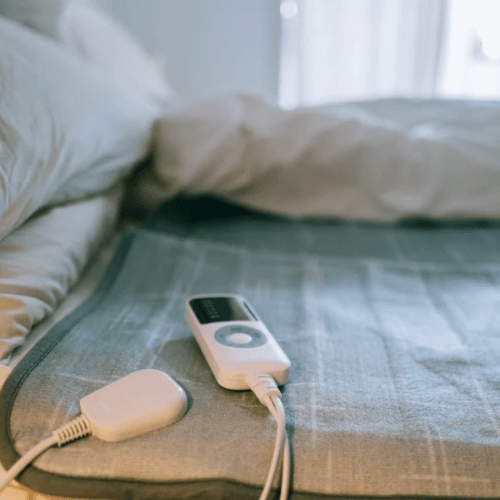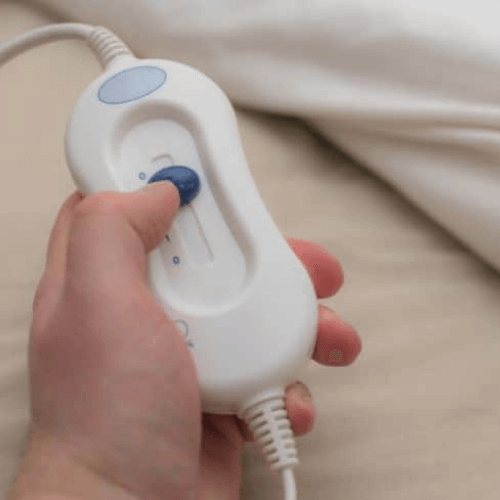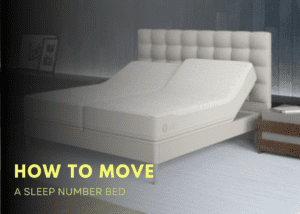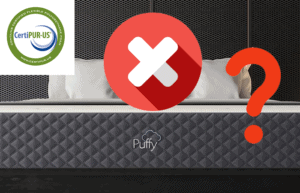Have you ever wondered how much power an electric blanket uses? It’s a question that many people ask, yet the answer isn’t always clear.
Before investing in an electric blanket, it’s important to understand how much energy they consume with any electrical appliance, there comes a cost – both financially and environmentally.
If you’re curious about the impact of using an electric blanket on your energy bill, then this article is for you!
Let’s dive in and find out just how much power an electric blanket can use.
What Is An Electric Blanket?

An electric blanket is a device used to provide warmth and comfort from cold weather. It is essentially a quilted or knitted fabric that contains electrical wires or heating elements.
Electric blankets come in many different sizes, shapes and colors. They are also available with a variety of features such as adjustable heat settings, timers, and auto-shutoff functions.
The power draw of these blankets depends on the wattage rating of the model chosen.
Generally speaking, most models range from 25-200 watts per hour with higher wattage ratings providing more heat intensity.
Average Power Consumption Of An Electric Blanket

Electric blankets come in a variety of sizes and wattages, but they all generally range from 40-100 watts per hour.
That means a queen size blanket running on low can consume up to 10 kWh of electricity a month—the equivalent of leaving five 100-watt lightbulbs on for the same amount of time.
To put it into perspective, the average American household uses about 920 kWh per month, so a single electric blanket can account for 1% of your total electricity usage.
It is important to note that different types of electric blankets can have widely varying levels of power consumption.
Some models with more advanced features may use up to 200 watts per hour; others may use as little as 20 watts per hour. The best way to find out exactly how much power your model uses is by consulting the manual or checking with the manufacturer directly.
By taking steps like lowering the temperature setting and unplugging before bedtime, it is possible to significantly reduce the amount of energy consumed by an electric blanket.
So while it is true that electric blankets do have higher power consumption than other appliances in your home, they don’t have to be energy hogs if you take steps to manage their usage properly.
Benefits And Disadvantages Of Using An Electric Blanket
Electric blankets are a wondrous invention! They can keep you toasty warm at night and make wintertime much more enjoyable. But like all things, electric blankets come with their own set of advantages and disadvantages. Let’s take a closer look:
Pros:
- Relief from Aches & Pains: Electric blankets provide an extra layer of warmth that helps soothe sore muscles and joints while you sleep.
- Money Savings: Electric blankets are energy-efficient and cost much less money than running the furnace or heating up your entire house just to stay warm in bed.
- Coziness & Comfort: Nothing beats curling up in a warm bed on cold nights!
Cons:
- Fire Hazard: Due to their electrical components, there is always a risk of fire or electric shock if not used correctly.
- EMF Exposure: Some electric blankets may emit electromagnetic frequencies (EMFs) which have been linked to adverse health effects such as headaches, fatigue, dizziness, nausea, and more.
- Short Lifespan: The lifespan of an electric blanket is usually around 5 years, so it’s important to check for any signs of wear and tear before using it each season.
With these pros and cons in mind, it’s important to consider other factors when deciding if an electric blanket is right for you…
Different Types Of Electric Blankets
Electric blankets come in a variety of shapes and sizes. They range from full-sized bedding to lap throws and travel blankets.
Each type offers different levels of warmth.
Some feature dual controls, so two people can customize their own heat settings.
Others are designed for use in cars or RVs with lighter weight materials that keep you warm without adding bulk or taking up much space.
Most electric blankets offer adjustable heat settings, allowing you to select the right level of warmth for your needs.
Many models have an auto shut off feature that will turn the blanket off after a certain period of time has passed, reducing the risk of overheating or fire hazards.
Additionally, some electric blankets come with a timer so you can set it to turn on before bedtime and turn off automatically when its time to get up.
In addition to various types and features, different fabrics make up the exterior of an electric blanket which also affects how much power it uses.
Natural materials like cotton and wool are breathable and provide insulation while synthetic fabrics like polyester are lightweight but don’t retain heat as well as natural materials do.
No matter what type or fabric you choose, be sure to read all instructions before using your electric blanket for optimal safety and performance.
Factors Affecting Electric Blanket Power Usage

The electric blanket is a powerful symbol of comfort and warmth, providing solace from the chill of winter. But like all sources of energy, its power usage needs to be carefully managed. In this article we will explore the factors that affect electric blanket power usage.
For starters, the wattage of an electric blanket affects how much electricity it consumes.
A higher wattage means more electricity consumed and therefore a higher power bill.
This is why it’s important to check the wattage before buying an electric blanket – get one with too high a wattage and you’ll end up paying more in electricity than necessary.
Other factors such as insulation and air circulation play into how much electricity an electric blanket consumes.
A well-insulated blanket can help keep heat in, while proper air circulation helps dissipate heat faster and reduces the amount of energy needed to maintain comfortable temperatures.
Additionally, how often an electric blanket is used can also influence how much power it uses – blankets that are used for extended periods of time will consume more electricity than those used only occasionally.
All these factors need to be kept in mind when selecting an electric blanket, ensuring that you get one that meets your needs without consuming too much power or costing more than necessary on your monthly bills.
With all these considerations made, you can be sure that the electric blanket you choose will provide the warmth and comfort you crave while still keeping energy costs down.
Troubleshooting Electric Blanket Power Issues
If you’re having power issues with your electric blanket, don’t despair. There are several troubleshooting steps you can take to get it working again.
Take Jim’s case for example: he was having a hard time getting his electric blanket to turn on and stay on. Here are four simple steps to help solve power issues with electric blankets:
- Check the power source- is the socket turned on? Is the cord frayed or broken? Are there any breaks in the cord?
- Make sure the thermostat is set correctly- too high or low of a setting can cause the blanket to shut off.
- Check for any loose connections in the wiring- inspect for any loose wires or connectors that may need tightening.
- Replace fuses if necessary- if all else fails, replacing faulty fuses should get your electric blanket up and running again.
If these steps don’t help, it may be time to replace your electric blanket entirely.
A new model will use less power than an older one and will likely last longer too! Keep in mind that electric blankets consume anywhere from 20-180 watts, so make sure you use one that meets your needs – and never leave a plugged in electric blanket unattended!
Frequently Asked Questions
How Often Should I Replace My Electric Blanket?
Replacing an electric blanket is a prudent practice. With regular usage, they can become worn out and less efficient. To ensure safe and efficient use of your electric blanket, it is important to replace it periodically.
For optimal performance, experts recommend replacing your electric blanket every five years. This ensures that the components of the blanket are up-to-date with the latest safety features and insulation materials.
Additionally, this frequency of replacement also helps keep your energy bills low as older blankets tend to consume more power than newer models.
Therefore, investing in a new electric blanket every five years is an effective way to maintain its efficiency and prevent any risk of overheating or fire hazards due to old wiring or insulation materials. Taking these simple steps will help you enjoy the warmth and comfort from your electric blanket for many more winters!
How Much Does An Electric Blanket Cost?
Electric blankets have become increasingly popular for their comfort and convenience. But how much do they cost?
It depends on the quality and features of the blanket, but there are plenty of options out there. Here are 4 key factors to keep in mind when shopping for an electric blanket:
1. Quality – Higher-end models tend to last longer, while cheaper models may need to be replaced after a few months.
2. Size – Blankets come in sizes from twin to king, so consider what size is best for you or your bed.
3. Temperature Control – Some electric blankets come with multiple heat settings, while others only have one setting.
4. Safety Features – Look for features like overheat protection and automatic shutoff for added safety and peace of mind.
Overall, electric blankets range from $20-$200 depending on these factors.
Consider your needs carefully before making a purchase – a higher-end model may be more expensive up front, but could save you money in the long run due to its durability and safety features.
Whether you’re looking for luxury or value, there’s sure to be an electric blanket perfect for you!
What Is The Recommended Wattage For An Electric Blanket?
The electricity in the air is palpable as one contemplates the wattage of an electric blanket. Like a sleeping dragon, it has the potential to heat and soothe–or scorch and incinerate.
When selecting an electric blanket, it’s important to understand the recommended wattage for its use.
Generally, the power consumed by the blanket should be between 50-100 watts per square meter. This will ensure that it uses just enough energy to provide a comfortable temperature while using minimal power.
It’s also worth noting that higher wattage blankets can cause overheating, which may lead to safety issues. Therefore, it’s essential to select a blanket with an appropriate wattage rating for comfort and safety reasons.
Finally, selecting an electric blanket with a low wattage rating will save energy and money over time while ensuring a safe and comfortable night’s sleep.





